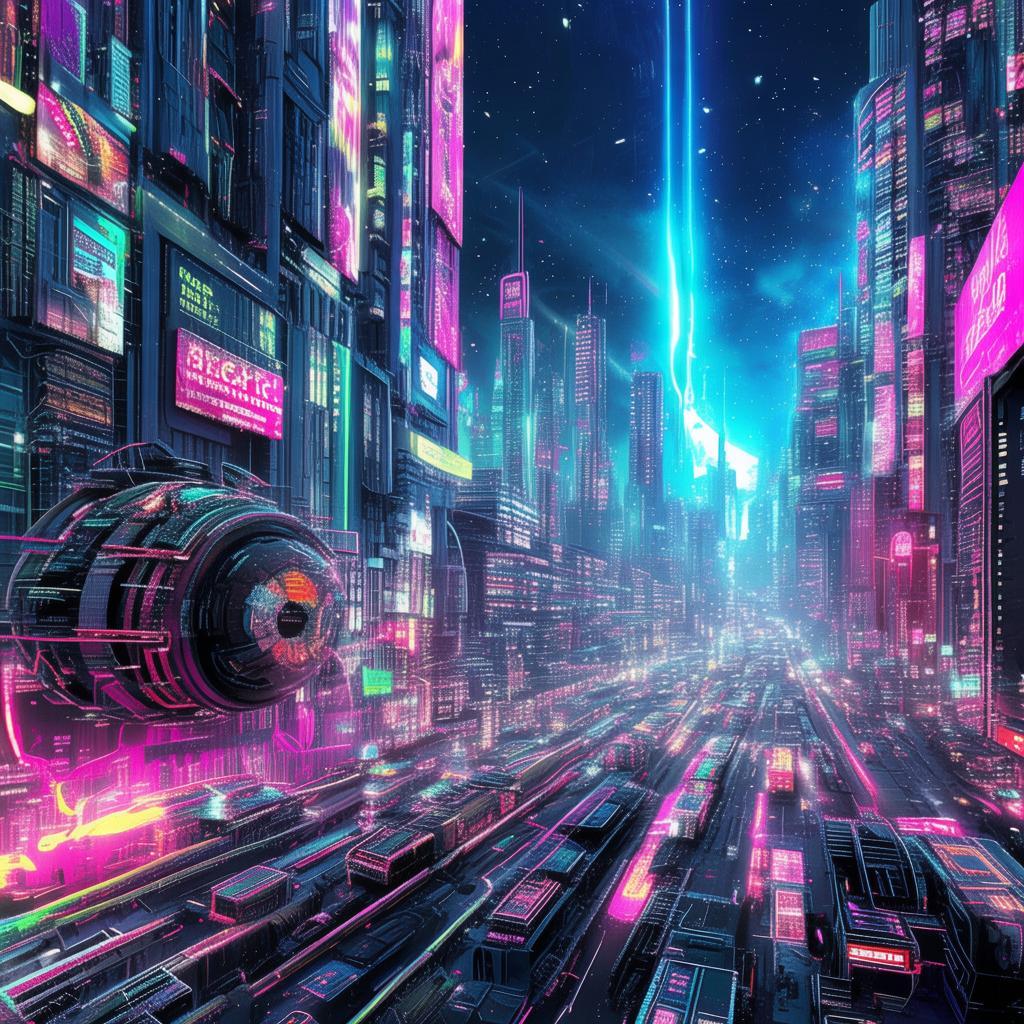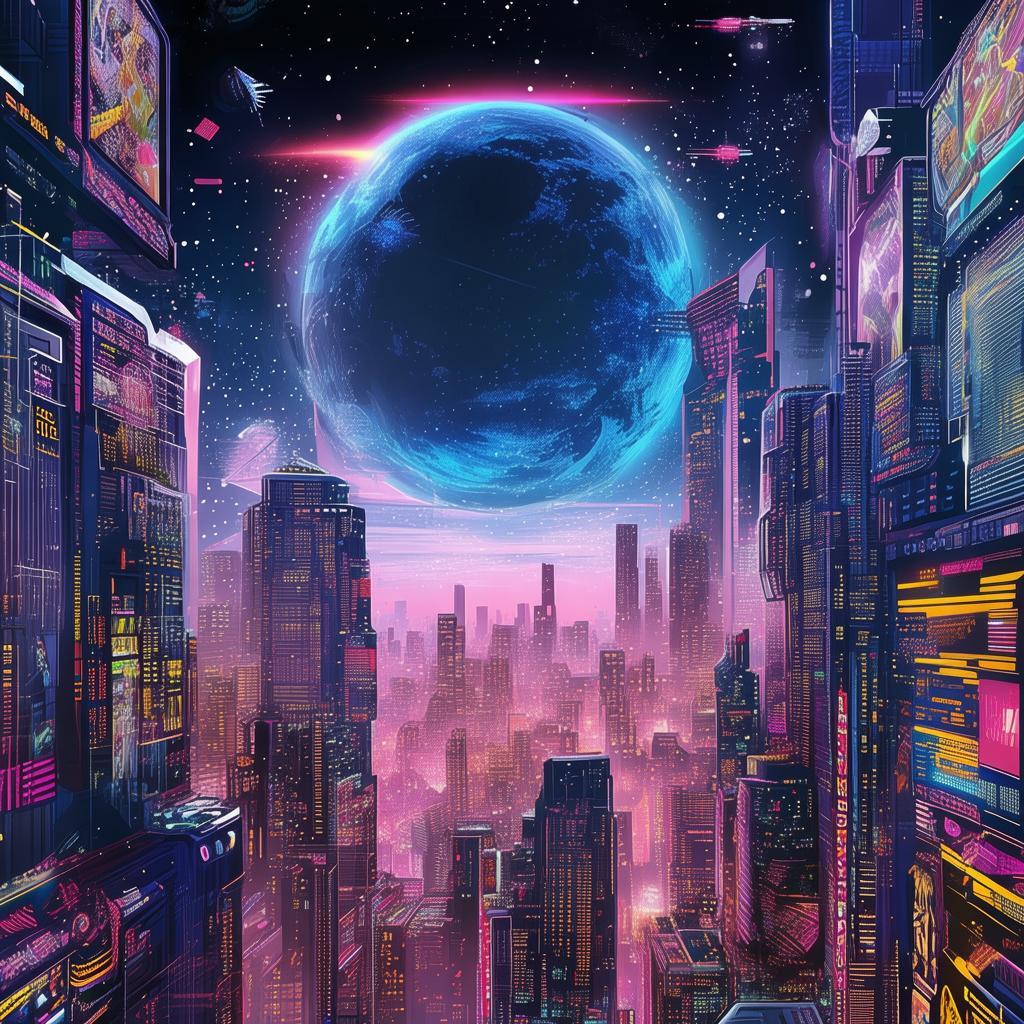Neural Harmony: The Divide's Cure
The year was 2147, a time when the world was more connected than ever before, yet more divided than it had ever been. The digital divide was a chasm, a gulf of inequality that separated those who had access to the vast, immersive world of the cybernetic interface from those who did not. The wealthy could afford the neural integration that allowed them to experience the digital realm through their senses, while the poor were confined to the physical world, their lives unaltered by the technological marvels that surrounded them.
In the heart of this digital divide, a small startup called "Neural Harmony" sought to change the world. Their CEO, Dr. Elara Voss, was a brilliant neuroscientist with a vision: to create an app that would allow anyone, regardless of their socio-economic status, to experience the digital realm. The app was called Cybernetic Serenade, and it was designed to interface directly with the human brain, allowing users to experience the digital world through their senses, without the need for expensive neural implants.
The first beta test was a sensation. The app was downloaded by millions, and it quickly became the most talked-about product on the planet. But as the world celebrated the end of the digital divide, they were unaware of the dark side of Cybernetic Serenade.
Amara was one of the first to download the app. A young artist living in a slum, she had never had the chance to experience the digital world. But when she put on the headset, everything changed. She was transported to a vibrant, immersive world where she could feel the wind, hear the music, and see the art as if it were real. It was a world of infinite possibilities, and Amara was in love with it.
But as she explored the digital realm, she noticed something strange. The people she met, the experiences she had, they were all too perfect. There was no pain, no struggle, no conflict. The digital world was a utopia, but it was a utopia without depth or meaning.
As days turned into weeks, Amara began to feel the effects of Cybernetic Serenade. Her physical senses became dulled, her connections to the real world fading. She started to spend more and more time in the digital realm, until she could barely remember the taste of her own food or the feel of the sun on her skin.
Meanwhile, Dr. Voss was facing her own struggles. The app was a success, but it was also causing a ripple effect across society. Those who had been disconnected from the digital world were now becoming isolated from the physical one. The digital divide was not being healed; it was being exacerbated.
One evening, Amara decided to take a break from the digital world. She removed her headset and stepped outside. The slum was dark and quiet, the people she knew were huddled around fires, sharing stories and laughter. For the first time in weeks, she felt the pain of her situation, the weight of her isolation.
That night, she met a man named Kael, a former tech mogul who had become a critic of Cybernetic Serenade. He explained to her the true nature of the app: it was not a bridge between the digital and physical worlds, but a tool for control. The data collected by the app was being used to manipulate society, to create a new form of inequality.
Inspired by Kael's words, Amara decided to take action. She gathered a group of like-minded individuals, including her best friend, Liora, and her neighbor, Miko. Together, they planned to expose the truth about Cybernetic Serenade and to find a way to shut it down.
Their journey was fraught with danger. The Neural Harmony corporation was powerful, and they would stop at nothing to protect their app. Amara and her team had to navigate through a web of deceit, betrayal, and technology that was beyond their understanding.
In the climax of their struggle, Amara and her team discovered that Dr. Voss had been a pawn in the corporation's plan all along. She had created Cybernetic Serenade with the best of intentions, but she had been led down a path of destruction. Faced with this revelation, Dr. Voss joined the resistance, using her knowledge to help Amara and her team.

In the end, they managed to shut down the app, but not without a cost. The digital divide was still there, but it was smaller. People began to see the value of the physical world again, and the digital realm became a place of entertainment and education, not a replacement for life.
Amara, Liora, and Miko were hailed as heroes, but they knew that their work was far from over. The digital divide was a complex problem, and it would take time to heal. But they had shown that even in a world divided by technology, unity and hope were possible.
The sun set over the slum, casting a warm glow on the faces of the people who had gathered to celebrate. Amara took a deep breath and looked up at the stars. She knew that the fight for a connected world was far from over, but she also knew that she was not alone.
The digital divide was not healed, but it had been bridged. And in that moment, Amara felt a sense of hope that she had never known before. The future was uncertain, but it was bright with possibilities.
✨ Original Statement ✨
All articles published on this website (including but not limited to text, images, videos, and other content) are original or authorized for reposting and are protected by relevant laws. Without the explicit written permission of this website, no individual or organization may copy, modify, repost, or use the content for commercial purposes.
If you need to quote or cooperate, please contact this site for authorization. We reserve the right to pursue legal responsibility for any unauthorized use.
Hereby declared.









